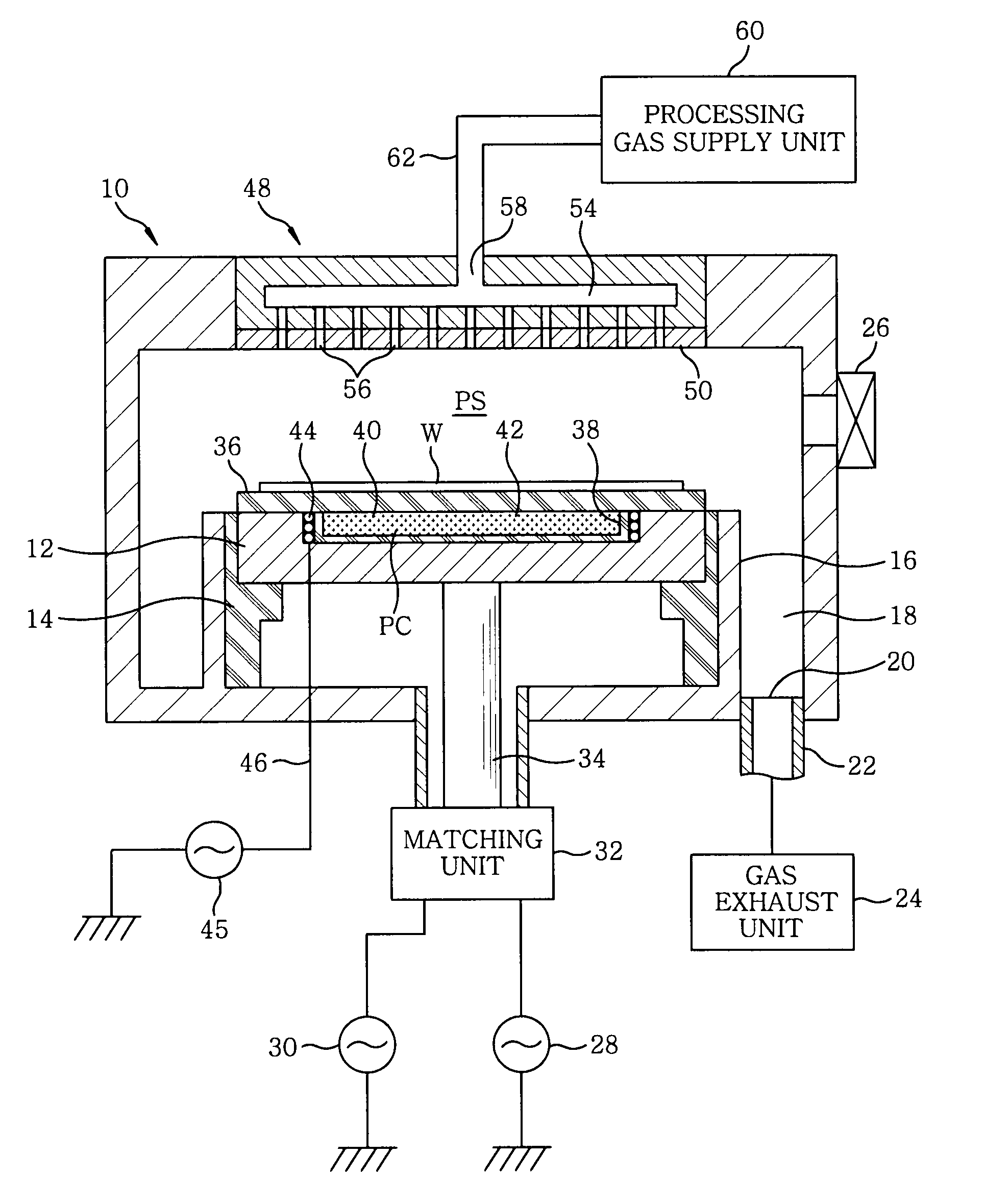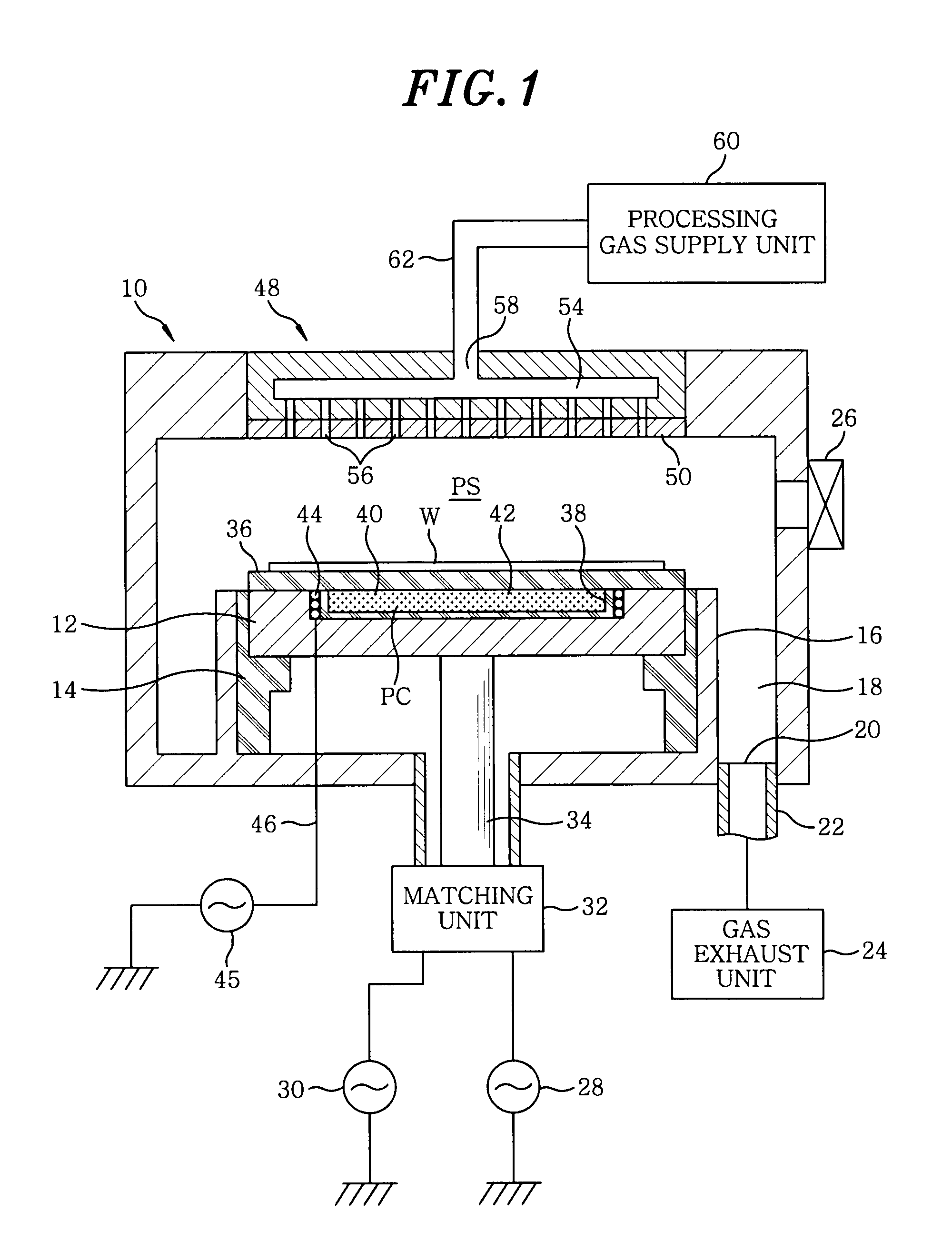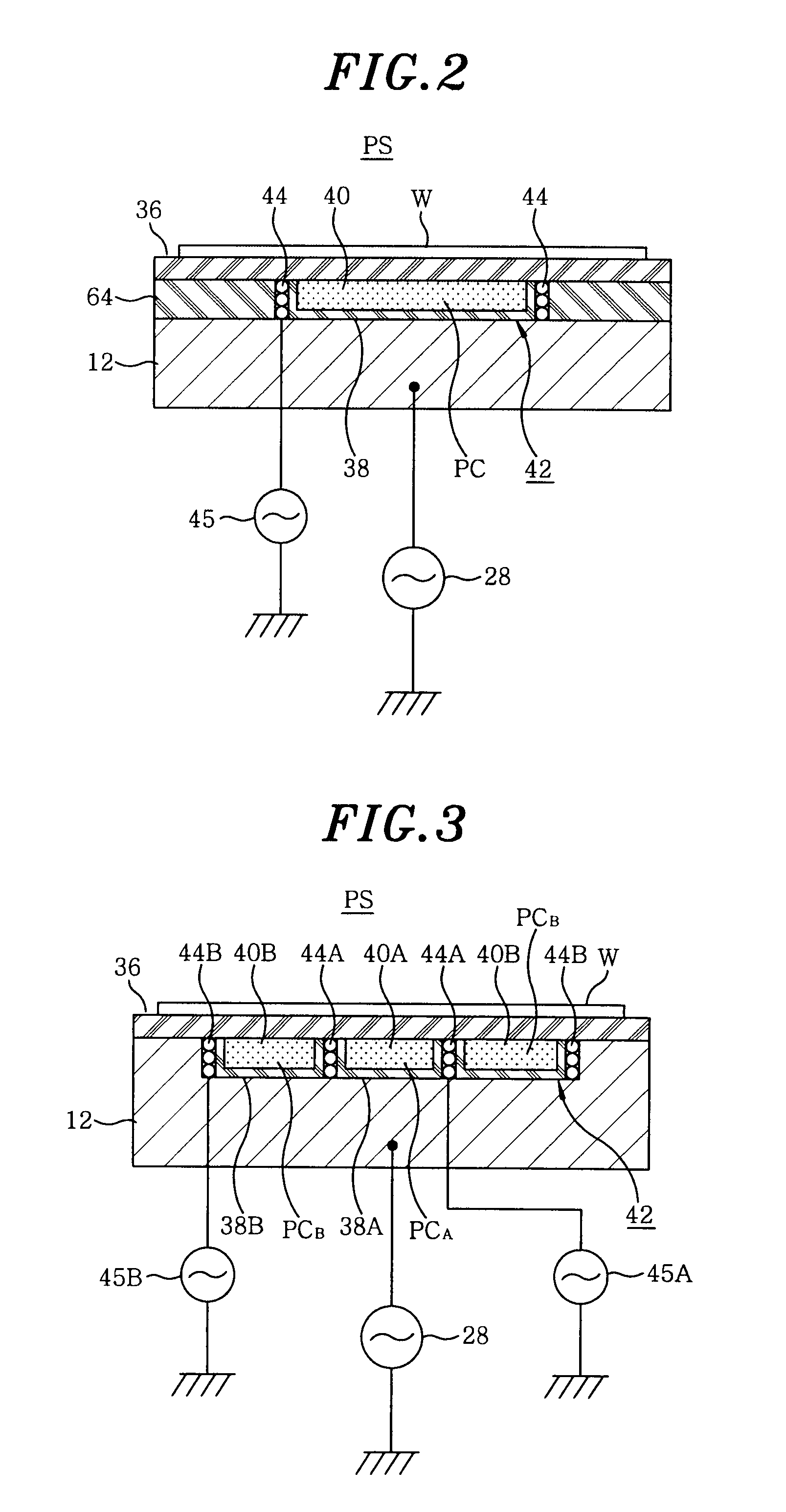Plasma processing apparatus
- Summary
- Abstract
- Description
- Claims
- Application Information
AI Technical Summary
Benefits of technology
Problems solved by technology
Method used
Image
Examples
Embodiment Construction
[0034]The embodiments of the present invention will be described with reference to the accompanying drawings which form a part hereof.
[0035]FIG. 1 shows a configuration of a plasma etching apparatus in accordance with a first embodiment of the present invention. The plasma etching apparatus is configured as a capacitively coupled plasma etching apparatus of cathode coupled type having parallel plate electrodes, and includes a cylindrical chamber (processing vessel) 10 made of a metal such as aluminum, stainless steel or the like. The chamber 10 is frame grounded.
[0036]A circular plate-shaped susceptor 12 serving as a lower electrode for mounting thereon a substrate to be processed, e.g., a semiconductor wafer W, is disposed horizontally in the chamber 10. The susceptor 12 is made of, e.g., aluminum, and is supported by a cylindrical insulating supporting portion 14 which is made of ceramic and vertically extends from a bottom of the chamber 10 without being grounded. An annular gas ...
PUM
 Login to View More
Login to View More Abstract
Description
Claims
Application Information
 Login to View More
Login to View More - R&D
- Intellectual Property
- Life Sciences
- Materials
- Tech Scout
- Unparalleled Data Quality
- Higher Quality Content
- 60% Fewer Hallucinations
Browse by: Latest US Patents, China's latest patents, Technical Efficacy Thesaurus, Application Domain, Technology Topic, Popular Technical Reports.
© 2025 PatSnap. All rights reserved.Legal|Privacy policy|Modern Slavery Act Transparency Statement|Sitemap|About US| Contact US: help@patsnap.com



